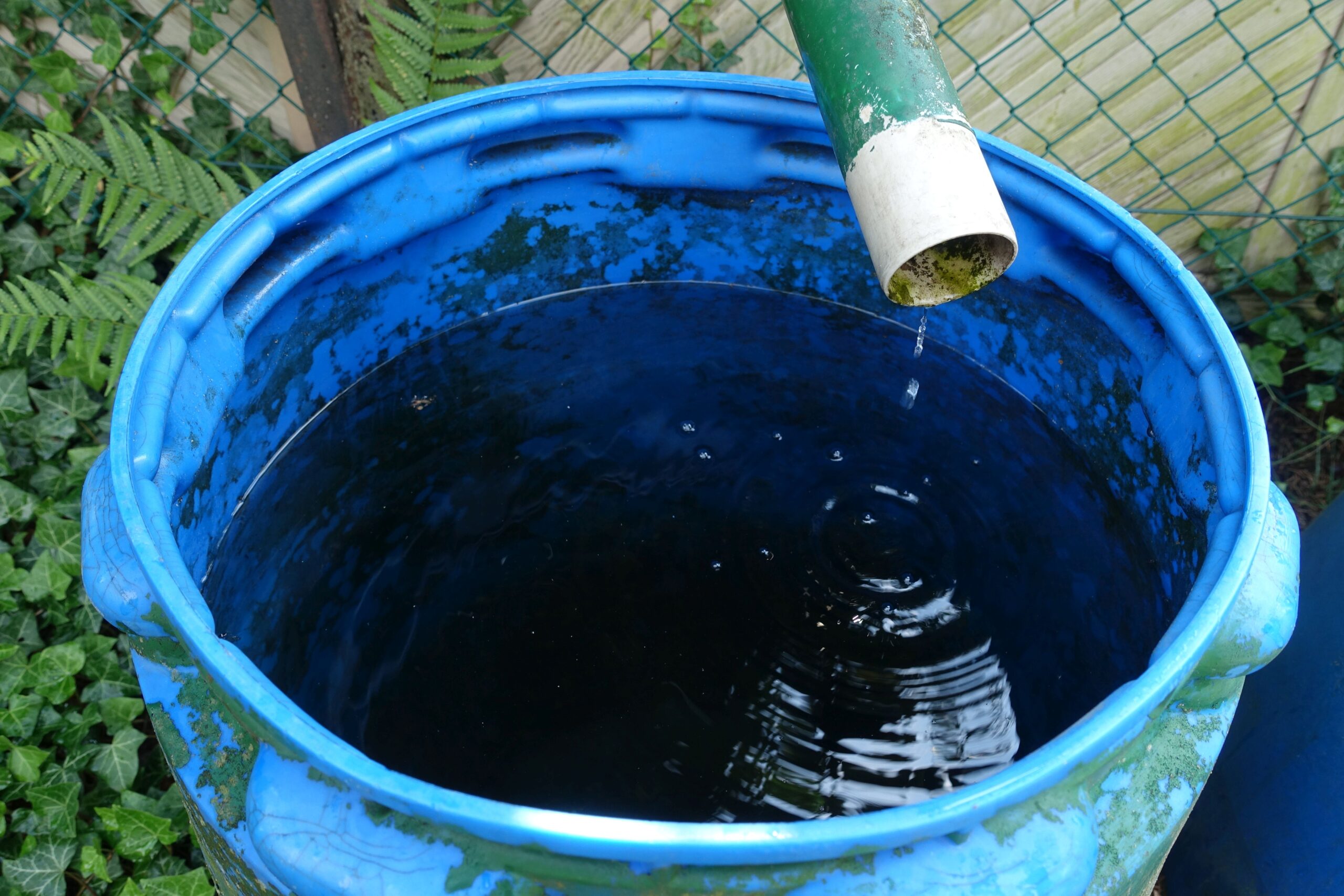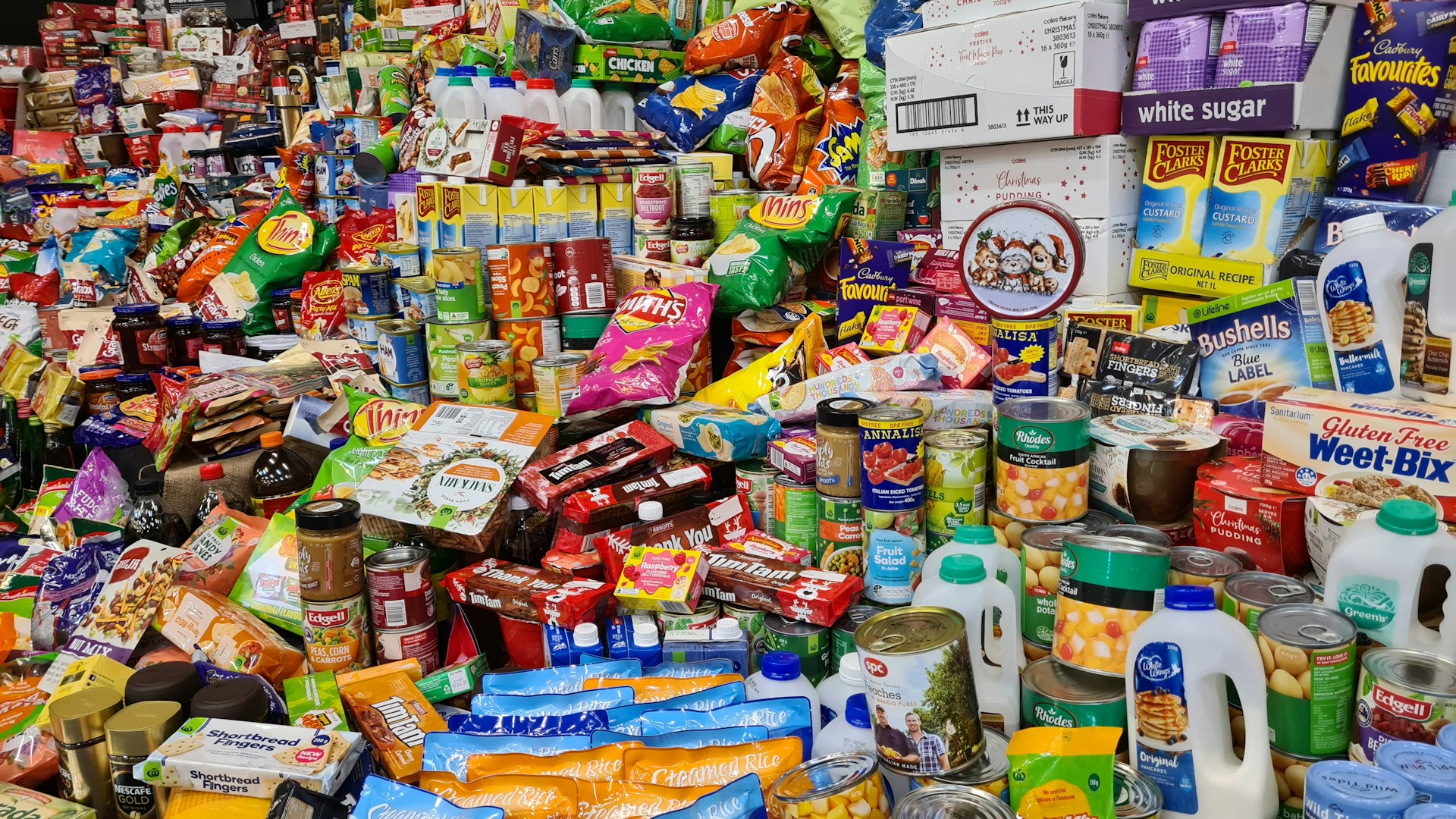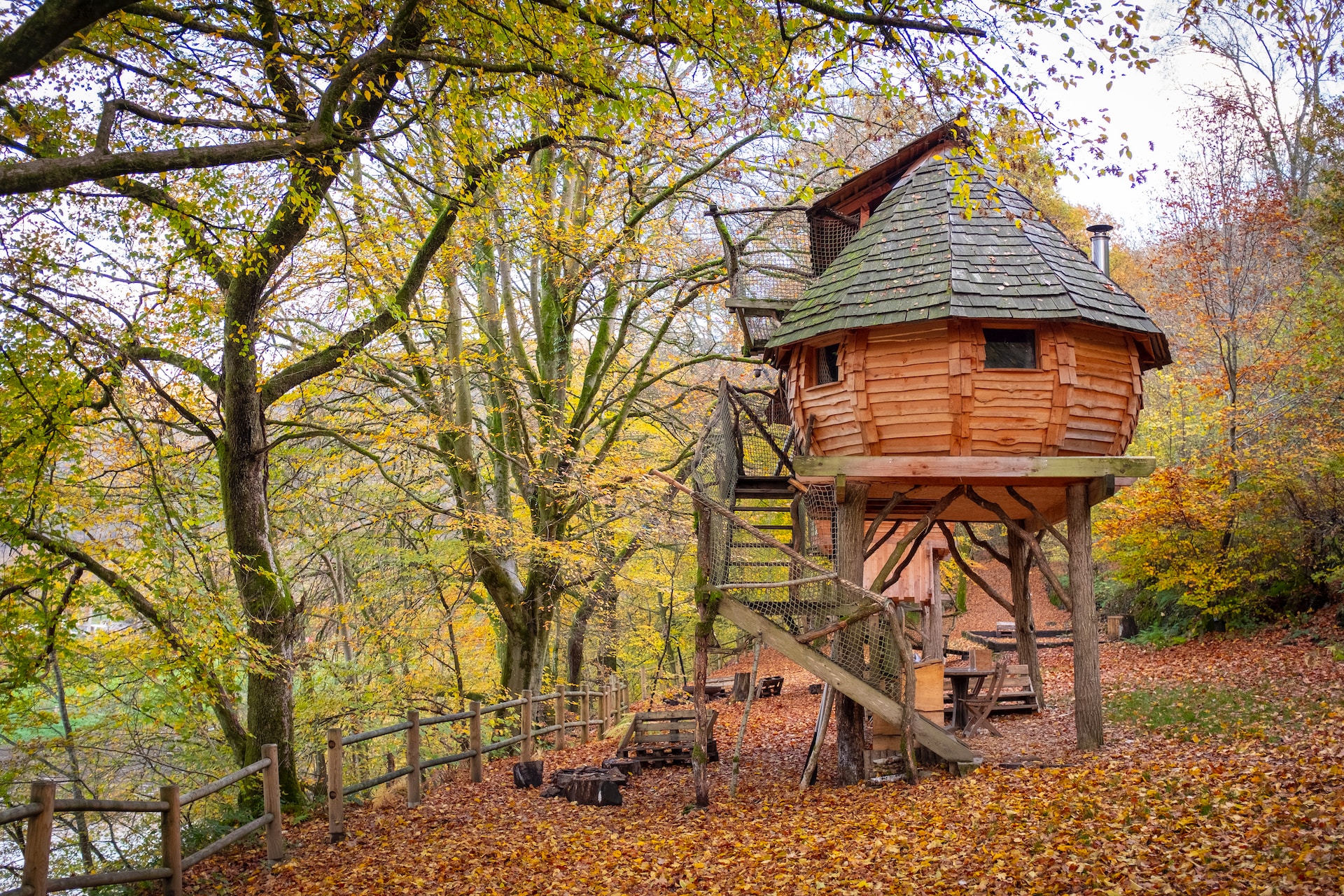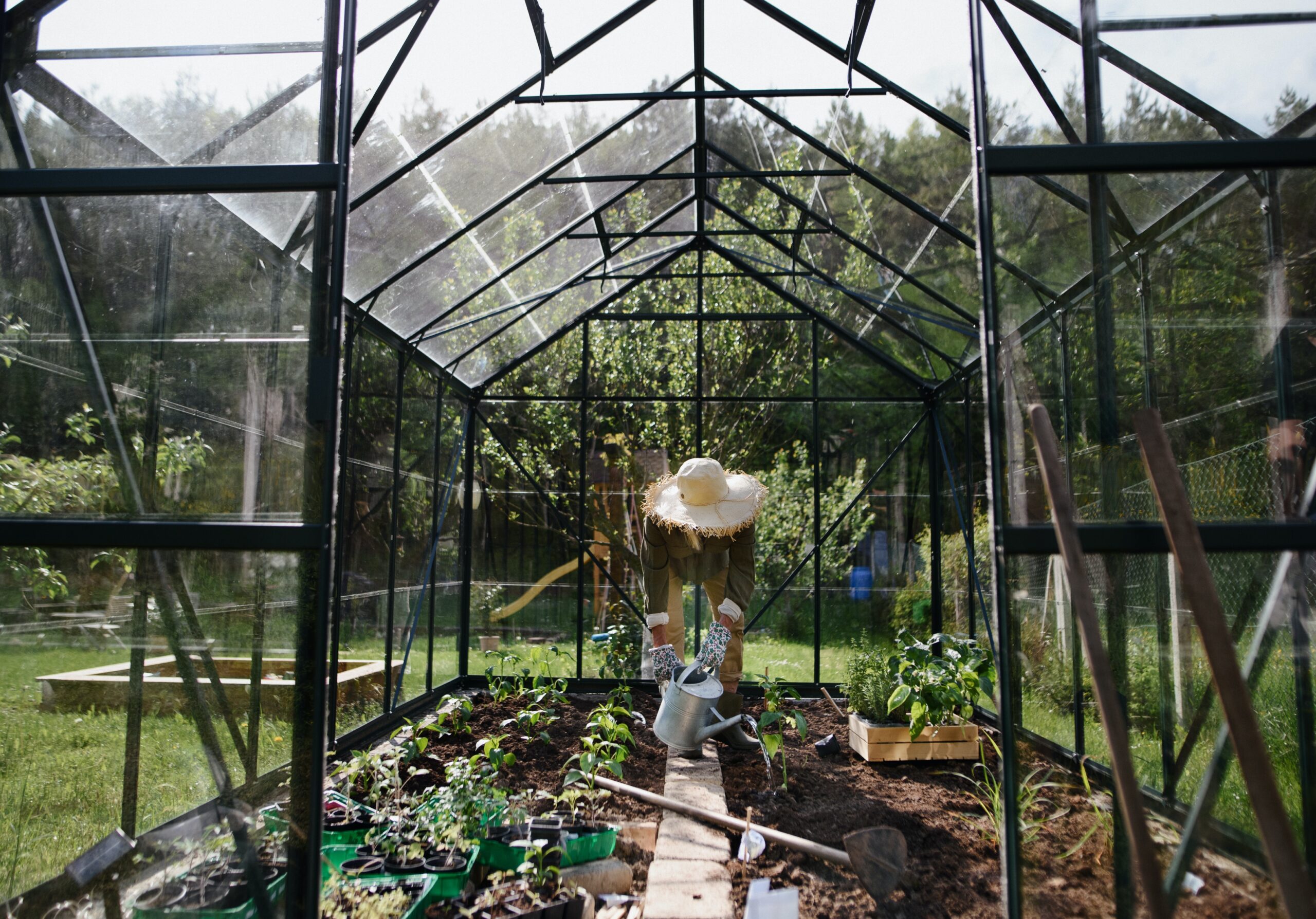Off The Grid
How to Create a Rainwater Collection System for Your Homestead

When it comes to homesteading and living off the land, self-reliance is the name of the game. An essential part of that self-reliance is having access to clean water, and what better way to acquire it than by harnessing the power of Mother Nature herself? In this article, I will guide you through the process of building your very own rainwater collection system. So grab your tools, muster up some grit, and let’s get started.
Choosing the right location:
Before you begin constructing your rainwater collection system, it’s crucial to find the right location on your homestead. Ideally, you want to position it near a large roof area, where rainfall is abundant. Assess the area for any obstructions, such as trees or other structures, which could hinder the collection process.
Gathering the necessary materials:
To build your rainwater collection system, you’ll need the following materials:
- Rainwater barrels or tanks: Choose durable containers made from food-grade materials to store the collected rainwater. Look for barrels or tanks with a capacity that suits your needs and the amount of rainfall in your area.
- Gutters and downspouts: Install gutters along the roofline of your homestead to collect rainwater efficiently. Connect downspouts to the gutters, directing the flow of water into the rainwater barrels or tanks.
- Filter system: It’s crucial to filter the collected rainwater to remove debris and contaminants. You can use a simple mesh screen or a more sophisticated filter system, depending on your location and water quality requirements.
- Overflow system: To prevent flooding or overflowing of your rainwater collection system, create an overflow structure. This can be a pipe or hose connected to a designated area where excess water can safely drain away.
Setting up the system:
Once you’ve gathered all the necessary materials, it’s time to set up your rainwater collection system. Here’s a step-by-step guide:
Step 1: Install the gutters and downspouts along the roofline, ensuring they slope slightly to allow water to flow freely.
Step 2: Position the rainwater barrels or tanks at the desired location. Ideally, elevate them to provide better water pressure and make it easier to access the collected rainwater.
Step 3: Connect the downspouts to the barrels or tanks using appropriate pipes or hoses. Be sure to secure all connections tightly to prevent leaks.
Step 4: Install a filter system at the entry point of your rainwater collection system. This will help remove leaves, twigs, insects, and other debris before the water enters the storage containers.
Step 5: Connect an overflow pipe or hose to the rainwater barrels or tanks, directing excess water away from the system and preventing overflow.
Maintenance and usage:
To keep your rainwater collection system functioning optimally, regular maintenance is key. Here are a few maintenance tasks to keep in mind:
- Clean the gutters and downspouts regularly to ensure the smooth flow of rainwater.
- Check and clean the filter system periodically to remove debris and maintain water quality.
- Use the collected rainwater wisely, primarily for non-potable purposes such as watering plants, livestock, or cleaning around the homestead. If you plan to use it for drinking or cooking, consider implementing additional filtration or purification methods.
- During freezing temperatures, ensure that your rainwater collection system is properly insulated to prevent damage.
Building a rainwater collection system is a valuable addition to any homestead, providing a sustainable and reliable source of water. By collecting rainwater, you reduce your dependence on external water sources and contribute to a greener and more self-sufficient lifestyle. So roll up your sleeves, channel your inner pioneer, and start building your very own rainwater collection system today.
The rewards will be well worth the effort.

Off The Grid
10 Foods That Could Save Your Life When Grocery Shelves Are Empty

When disaster hits and grocery stores run out of stock, your survival depends on what’s already in your pantry. You don’t need fancy freeze-dried meals, just smart, long-lasting foods that keep you nourished, energized, and ready to adapt. Here are ten essentials that could literally save your life when everything else is gone.
1. Rice
A bag of rice can feed you for weeks. It’s compact, calorie-dense, and easy to cook with minimal fuel. Brown rice has more nutrients, but white rice stores longer, lasting up to 30 years in airtight containers.
2. Beans (Canned or Dried)
Protein and fiber are survival gold. Beans black, kidney, or lentils provide steady energy and can be eaten alone or combined with rice for a complete meal. Dried beans last longer, but canned beans are ready to eat if water or heat are limited.
3. Peanut Butter
High in calories, fat, and protein, peanut butter is one of the best survival foods on earth. It doesn’t need refrigeration and keeps for months after opening. A few spoonfuls a day can sustain you through hard times.
4. Oats
Oats require little water, cook fast, and provide long-lasting energy. They’re versatile—make oatmeal, energy bars, or add them to soups to stretch meals.
5. Canned Tuna or Chicken
Canned meats offer vital protein and omega-3s. They’re lightweight, long-lasting, and require no cooking. Rotate your stock every few years for freshness.
6. Honey
Honey never spoils. It can sweeten bland food, soothe a sore throat, and even treat wounds due to its natural antibacterial properties.
7. Powdered Milk
When fresh dairy is gone, powdered milk gives you calcium, protein, and essential vitamins. Mix with filtered water or use in cooking.
8. Salt
Salt preserves food, balances electrolytes, and adds flavor. In survival situations, it’s worth more than gold.
9. Canned Vegetables and Fruit
These provide hydration, vitamins, and variety. Drink the liquid inside it’s full of nutrients.
10. Energy or Protein Bars
Compact, lightweight, and packed with calories, they’re perfect for bug-out bags or quick energy during stressful moments.
Final Tip: Store your food in cool, dark places and rotate supplies regularly. When the shelves go bare, preparation turns panic into confidence and survival into just another day you’re ready for.
Off The Grid
Building an Off-the-Grid Treehouse Retreat

The wilderness calls to many of us, beckoning with promises of tranquility and an escape from the urban hustle. One of the most rewarding ways to answer this call is by building an off-the-grid treehouse retreat. A sanctuary among the leaves, where you can reconnect with nature, and test your survival skills.
The first step to creating your treehouse retreat is choosing the right tree. It needs to be sturdy, mature, and healthy. Oak, maple, or fir trees are great choices due to their strength and longevity. Make sure you check with a local arborist or tree expert to ensure the tree’s health before you start building.
Design
Next, you’ll need to design the treehouse. Keep it simple, functional, and safe. Consider factors such as how you’ll access the treehouse, the view you want, and how much weight the tree can support. Ensure your design includes a sturdy floor, walls to protect you from the elements, and a roof to keep you dry.
Materials
Now, it’s time to gather your materials. Choose sustainable, weather-resistant materials like cedar or redwood. Use galvanized or stainless steel hardware to prevent rust. Remember, every additional pound puts more strain on the tree, so keep things light but sturdy.
Platform
When it’s time to build, start with the platform. This will distribute the weight evenly across the tree and minimize damage. Use a post and beam method, where the beams rest on tree-attached bolts. This method allows the tree to continue growing and moving in the wind.
Construct the walls and roof once the platform is secure. Use your survival skills to build efficiently and effectively. Your walls should be strong enough to withstand winds, and your roof should have a slight slope to allow rainwater to run off.
Interior
The interior of your treehouse retreat should be as functional as possible. A sleeping loft can save space, and built-in storage can keep your gear organized. Consider a small wood-burning stove for warmth, and solar panels or a small wind turbine for electricity. Remember, this is an off-the-grid retreat, so self-sustainability is key.
Safety
Safety should always be a priority. Install a secure ladder or staircase for access, and consider a secondary exit in case of emergencies. Keep a first-aid kit handy, and ensure you have a way to communicate with the outside world if necessary.
Food and water
Food is another important aspect. Keep a stock of non-perishable food items, but also learn about the edible plants and animals in the area. Fishing, hunting, or foraging can provide fresh food, and it’s a great way to immerse yourself in the wilderness.
Water is essential for survival. Collect rainwater using a barrel, and purify it for drinking and cooking. A composting toilet can handle waste, and it’s eco-friendly.
Building
Building an off-the-grid treehouse retreat is a challenging but rewarding project. It tests your survival skills, your ingenuity, and your resilience. But the reward is a sanctuary in the wilderness, a place where you can disconnect from the world and reconnect with nature.
Throughout this journey, remember to respect the wilderness. Minimize your impact on the environment. Use sustainable materials, respect local wildlife, and leave no trace.
Building this retreat isn’t just about creating a physical structure; it’s about building a deeper connection with the natural world. It’s about learning to survive and thrive in the wilderness. And it’s about discovering the strength, resilience, and resourcefulness within you.
So, friends, gather your tools, brace yourselves for the challenges ahead, and embark on this adventure. The wilderness is waiting.
Off The Grid
Achieve Self-Sufficiency with Greenhouse Gardening

Welcome, fellow adventurers, to Grits and Gear, where we’re always seeking ways to enhance our self-reliance and embrace the great outdoors. Today, we delve into the world of greenhouse gardening – an invaluable skill for achieving self-sufficiency and maintaining a sustainable lifestyle.
Building Your Greenhouse
Constructing a greenhouse is your first step toward creating an optimal environment for year-round plant growth. From affordable hoop houses to more elaborate structures, options abound. The key is to select a design that suits your needs, available space, and budget.
The Material Matters
When it comes to materials, consider factors such as insulating properties, durability, and cost. Popular options include glass, polycarbonate panels, and polyethylene film. Glass provides superior insulation but may be heavier and more expensive. Polycarbonate panels offer good insulation and durability but may require additional shading in hot climates. Polyethylene film is a cost-effective choice, providing sufficient insulation while still allowing light to pass through.
Temperature and Ventilation
Maintaining the ideal temperature is critical to greenhouse success. Optimal growing temperatures vary depending on the specific plants you’re cultivating, so it’s important to research the requirements of your chosen crops. Generally, a range of 70 to 85°F (21 to 29°C) is suitable for most vegetables and herbs.
Proper ventilation is essential to control temperature, humidity, and prevent the risk of disease. Consider installing fans, louvers, and vents to facilitate air movement. Automatic vent openers can be a helpful addition, regulating airflow by responding to temperature changes.
Plant Selection
Selecting the right plants for your greenhouse is crucial for achieving year-round yields. While you have the freedom to experiment with various crops, some popular choices for greenhouse gardening include tomatoes, peppers, cucumbers, herbs, lettuce, and microgreens.
Self-Sustainability Through Hydroponics
Embracing hydroponics within your greenhouse allows plants to thrive without soil. Instead, nutrient-rich water solutions deliver the essential elements plants need for growth. Hydroponic systems conserve water, minimize soil-borne diseases, and provide faster growth rates. Consider exploring different systems such as nutrient film technique (NFT) or deep water culture (DWC) to find the best fit for your greenhouse goals.
Lighting and Fertilization
While natural sunlight is ideal, supplemental artificial lighting may be required during colder months or in locations with limited sunlight. LED grow lights are an energy-efficient and cost-effective option, providing specific light spectrums to meet your plants’ needs.
To ensure healthy growth, consistent fertilization is crucial. Organic fertilizers are a sustainable choice, promoting soil health and minimizing the risk of chemical build-up. Compost, vermicompost (using worms), and fish emulsion are excellent options to enrich your greenhouse soil.
Pest Management
Keeping pests at bay is essential to protect your flourishing greenhouse garden. Implement integrated pest management practices, such as regular monitoring, physical barriers, and cultural control methods. Beneficial insects, like ladybugs and lacewings, can help control unwanted pests naturally. Additionally, careful attention to cleanliness, removing dead plant material, and regularly inspecting your plants can prevent pest infestations in the first place.
Harvesting and Preserving
As your plants mature, it’s time to enjoy the fruits of your labor. Regularly harvest your crops, promoting further growth and ensuring a continuous yield. Explore various preservation techniques, such as canning, drying, or freezing, to extend the shelf life of your harvest and enjoy the flavors of your greenhouse well into the winter months.
Greenhouse gardening offers us the opportunity to cultivate our own food year-round and embrace the principles of self-sufficiency. With a little determination, knowledge, and a touch of Jack Morgan’s spirit, you too can create a thriving oasis in the heart of your homestead. So, gear up, adventurers, and let’s embark on this self-sustainability journey together – one greenhouse at a time.
Remember, at Grits and Gear, we’re not just surviving; we’re thriving.
Stay resilient and keep exploring!
Disclaimer: The information provided in this article is intended for general guidance. It’s important to research and adapt the practices to suit your specific climatic conditions, plant preferences, and skill level.
-

 Tactical2 years ago
Tactical2 years ago70-Year-Old Fends Off Intruder with Lead-Powered Message
-

 Tactical2 years ago
Tactical2 years agoVape Shop Employee Confronts Armed Crooks, Sends Them Running
-

 Preparedness1 year ago
Preparedness1 year agoEx-Ballerina’s Guilty Verdict Sends Tremors Through Gun-Owner Community
-

 Preparedness1 year ago
Preparedness1 year agoGood Samaritan Saves Trooper in Harrowing Interstate Confrontation
-

 Tactical2 years ago
Tactical2 years agoMidnight SUV Theft Interrupted by Armed Homeowner’s Retaliation
-

 Off The Grid2 days ago
Off The Grid2 days ago10 Foods That Could Save Your Life When Grocery Shelves Are Empty
-

 Survival Stories2 years ago
Survival Stories2 years agoEmily’s 30-Day Experience of Being Stranded on a Desert Island
-

 Preparedness1 year ago
Preparedness1 year agoArizona Engineer’s Headless Body Found in Desert: Friend Charged